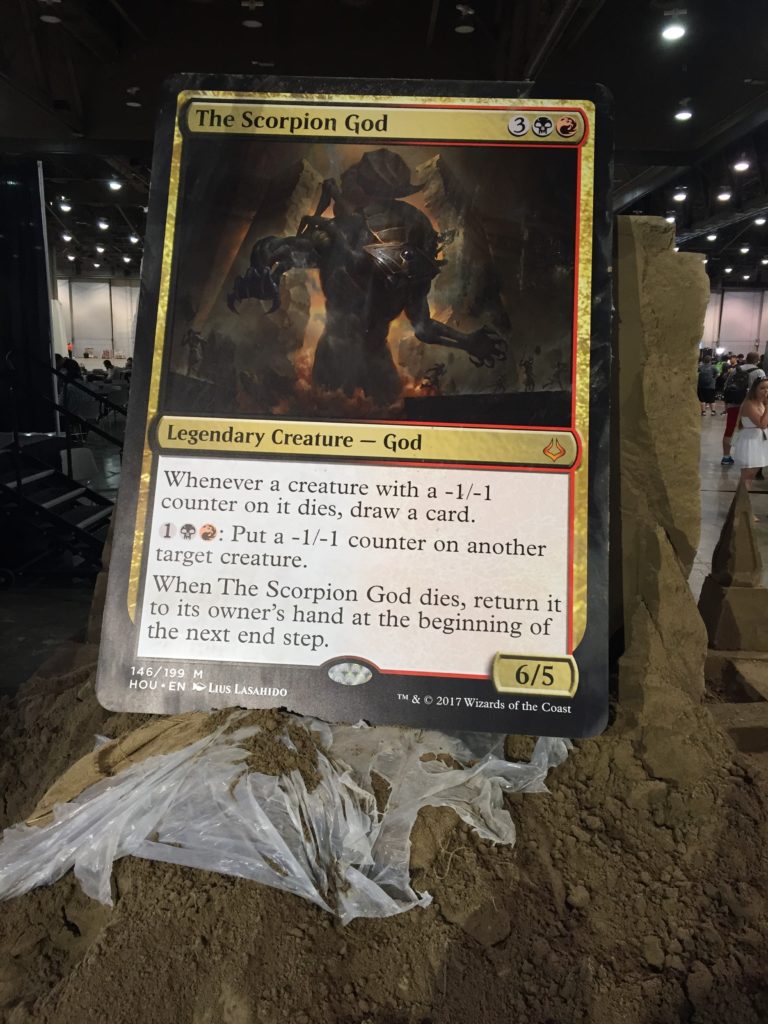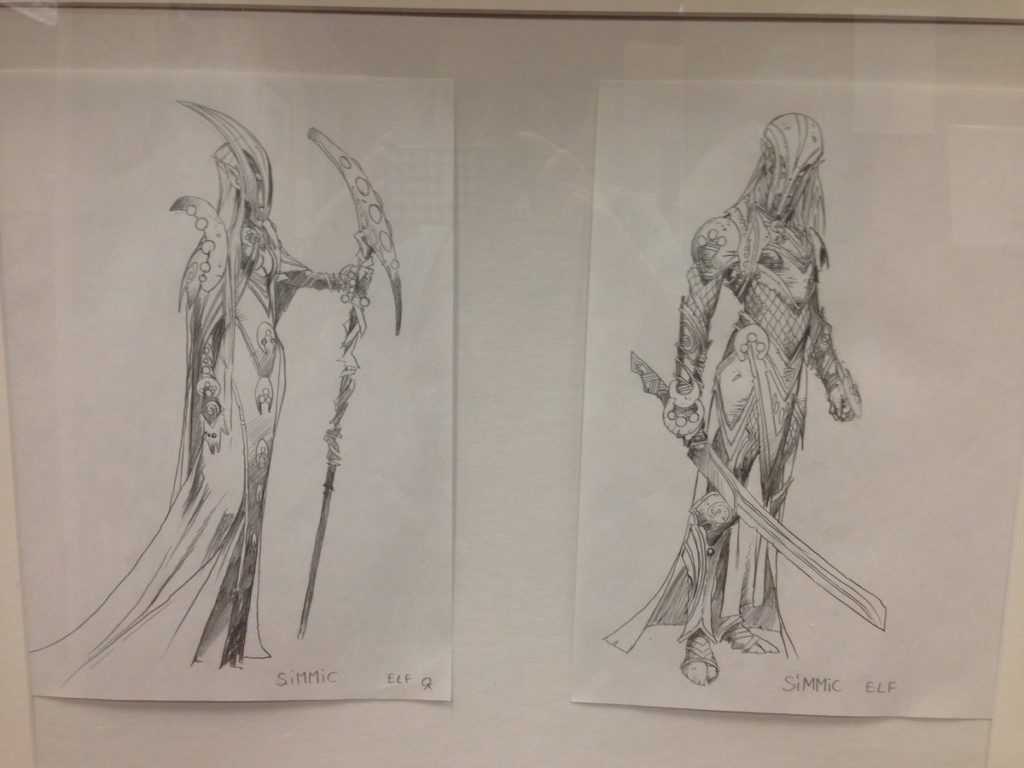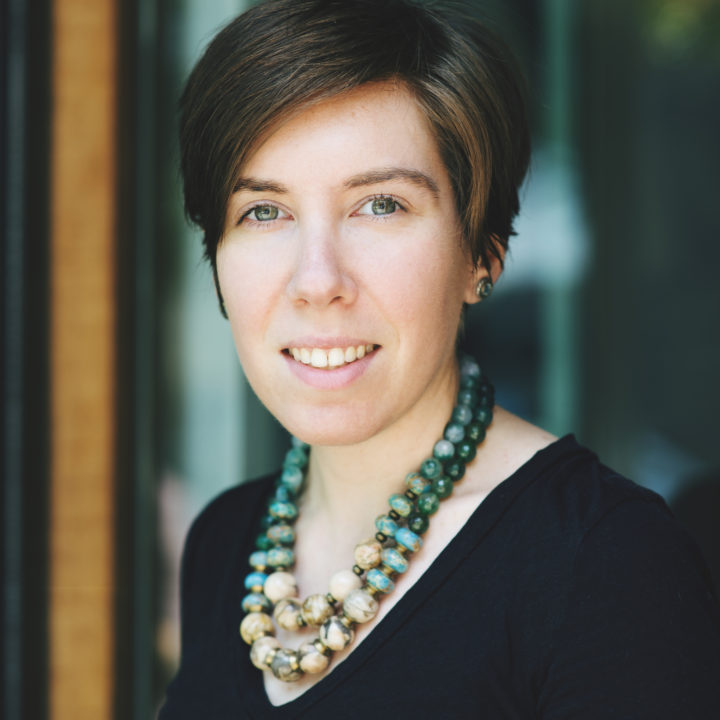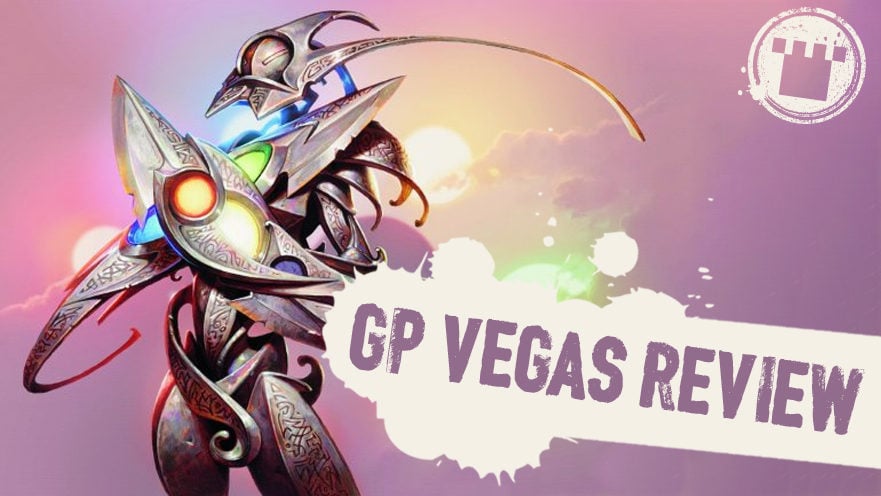One of the greatest Grand Prix I ever attended was GP Portland in 2014. The format was Team Sealed, my favorite, and I have fond memories of playing with two of my closest friends. But the thing I loved most about Portland was that it was more than just another Magic tournament – it was the first GP I’d attended that truly felt like a convention. Portland marked the debut of the Prize Wall, which gave players extra incentives to compete in side events, and featured a full slate of panels hosted by Magic personalities and pros. Before Portland, GP’s were marketed to grinders; now, as Courtney Rudiger pointed out last week, GP’s have something for everyone.
Portland was a game-changer, and it sparked a revolution in GP programming. The Prize Wall became standard. Artist alleys expanded. Tournament organizers introduced more side event options, including “bounty events,” where players could challenge their favorite pros, and innovative formats like Turbo Draft (one game per round) and Full Box Sealed (exactly what it sounds like). The pieces were falling into place, but I’d argue that the puzzle wasn’t complete until GP Vegas 2017.
The remarkable thing about GP Vegas was that I spent so much of my time at the convention center having fun while not playing Magic. I competed in the main events of GP Vegas 2013 and 2015, but this time, there were so many other things to do that I didn’t think I’d have the time or the energy. It was the first Grand Prix I ever attended in which the main event was not the focus; in fact, it may be the first ever. I had a dozen activities scheduled for any given day, and there were a hundred people I wanted to talk to at any given time. If Wizards ever organized an actual Magic convention, it would look like this.

The Scorpion God, freed from its sand sarcophagus. Photo by Hallie Santo.
THE PANELS
GP Portland’s Prize Wall was its most successful experiment in the short term, but its greatest achievement was the introduction of panels. This is what made Portland truly convention-like: it was a tournament that attracted non-tournament players. You could show up just for LoadingReadyRun’s fake Homelands draft seminar, and that was just as valid as coming to play in the main event.
LoadingReadyRun were the only content creators scheduled to speak in Portland that year; GP Vegas hosted nearly a dozen YouTubers, streamers, and podcast crews. The seminar format even gave Wizards of the Coast new avenues to connect with their audience and disseminate information: Members of the new Play Design team in R&D held a Q&A, and the official Magic Twitch channel broadcast a live preview show for Hour of Devastation featuring larger-than-life cards. Fans camped out to get seats to the most popular panels and lined up alongside the stage when the bleachers were full. It was a spectacle.
THE PARTY
Speaking of crowds, the Command Zone gathering at the Plaza Hotel was a hit. I built a Commander deck for the first time in four years for the occasion and arrived at the venue just a few minutes after the event was scheduled to start, thinking most people would still be at the convention center playing Legacy or out to dinner. To my surprise, the ballroom was teeming with Magic players; hosts Jimmy Wong and Josh Lee Kwai reported that there were over 500 people in attendance. I ended up playing an excellent game with two gentlemen from Panama, who saw my card sleeves and remarked that they were Card Kingdom shoppers. Hours later, they both followed me on Twitter. I’ve had some fantastic GP opponents over the years, and have even kept in touch with a few, but I’ve never had such an easy time connecting with people. After all, GP Vegas wasn’t a competition: it was a community event with competitive elements.
THE ART SHOW
Interestingly, my favorite aspect of GP Vegas was a feature that was completely unique to it: the first-ever Magic Art Show. Vorthos extraordinaire Mike Linnemann rounded up pieces from throughout Magic’s history, including the original art for some of the game’s most iconic cards and concept art for the denizens of Ravnica and Mirrodin. Linnemann and crew set up the exhibit in a separate conference room down the hall from the main expo hall, giving GP attendees a quiet place to relax, reflect, and contemplate the beauty of the Multiverse. An estimated 1,800 people passed through the gallery during its four-day run, and the initial reaction was positive enough that the Magic Art Show may become a staple of GP’s to come.

Ravnica concept art from the Magic Art Show. Photo by Hallie Santo.
Of course, few GP’s will be as large as GP Vegas – at least for the foreseeable future – and will not warrant all the bells and whistles. Not every GP requires an art show, a full panel schedule, several spell-slinging events, and a handful of late-night after-parties. Most are just very large Magic tournaments, which attract the most competitive among us to come out and do battle. But most Magic players would rather attend a Magic convention than a Magic tournament, and for the sake of those people, I’m glad that GP Vegas happened and that it was successful.
Here’s another thing I found remarkable about GP Vegas: It wasn’t anchored to a set release. Wizards didn’t need a Modern Masters set to sell 10,000 people on the prospect of playing Magic in Las Vegas in the middle of June. They gladly went, anyway, because Modern is a healthy format, or because their favorite content creators would be there, or because their Twitter friends who live thousands of miles away convinced them to go. Because there’s more to Magic than the game itself. If an event like this could happen last weekend, it can happen again.
Header design: Justin Treadway
Header image: “Etched Champion” by Matt Carvotta

Hallie served as Content Manager for CardKingdom.com and editor-in-chief of the Card Kingdom Blog from 2017-2022. Part tournament grinder, part content creator, Hallie is always looking for ways to improve her game and to share what she learns with others.

